Technology plays a very large role in your DHH child’s life. In fact, for most of your children it is technology that allows them to have access to sound and hear the world around them. Bluetooth, all but unheard of 10 years ago, now dominates hearing loss technology and has allowed for incredible advances in how your child accesses sound in a wide variety of environments; from the classroom to the sports field to the movie theater!
Because of the fast-moving nature of technology, improvements are happening all the time so this list is certainly not exhaustive and we encourage you to reach out to your child’s device manufacturer for any tech updates. Our list is to provide you with the information of what is currently available to best support your child. As with any technology devices, FHSR recommends you work directly with your child’s Audiologist to make the correct selection for their needs and device.
Hearing devices are an option for individuals with hearing loss. There are multiple options depending on the type of hearing loss and severity. To learn more about types of hearing loss, visit our Facts about Hearing Loss page. For individuals with hearing loss, there are hearing aids, cochlear implants and bone anchored hearing aids (BAHA). Consult with your audiologist to learn what device is most appropriate.

A hearing aid amplifies the sound that a person hears. This can be for individuals with mild to severe hearing losses.
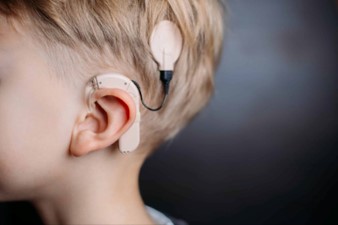
A cochlear implant is a surgically implanted device that sends sound past the damaged inner ear to the cochlear nerve. A cochlear implant is typically for individuals with severe to profound hearing losses.
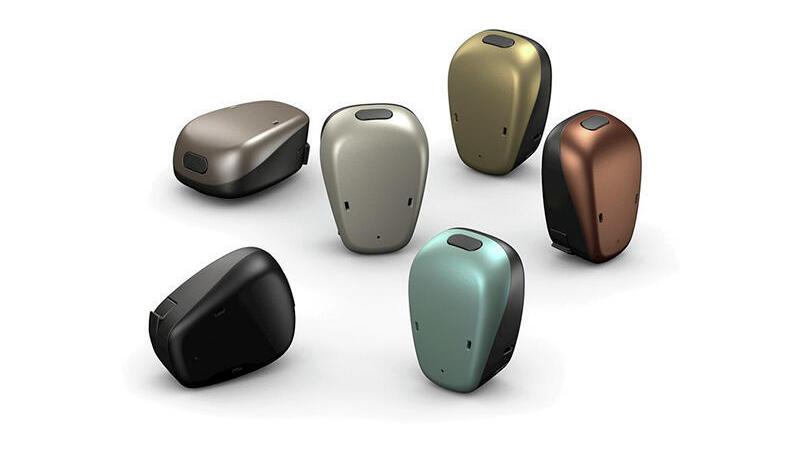
A BAHA is a device that vibrates the skull and sends sounds to the inner ear. This device is typically used for individuals with single sided hearing loss or a malfunctioning middle or outer ear.
Photo Credit: https://www.cochlear.com/us/en/home/products-and-accessories/cochlear-baha-system

The Taptic app listens for the sounds you choose and notifies you with an alert, vibrations, and flash. Taptic d/Deaf Support is a mobile alert system that listens to the environment through your phone. Taptic can detect a wide range of sounds, including doorbells, alarms, sirens, phone rings, and other important notifications. The app allows users to customize which sounds they want to be alerted to through its settings. In addition, the app’s innovative talk-to-text feature facilitates conversations between spoken and written language users – one can speak and the other can type, all without having to flip a phone around.
FHSR is not associated with and does not benefit from the promotion of the taptic app.
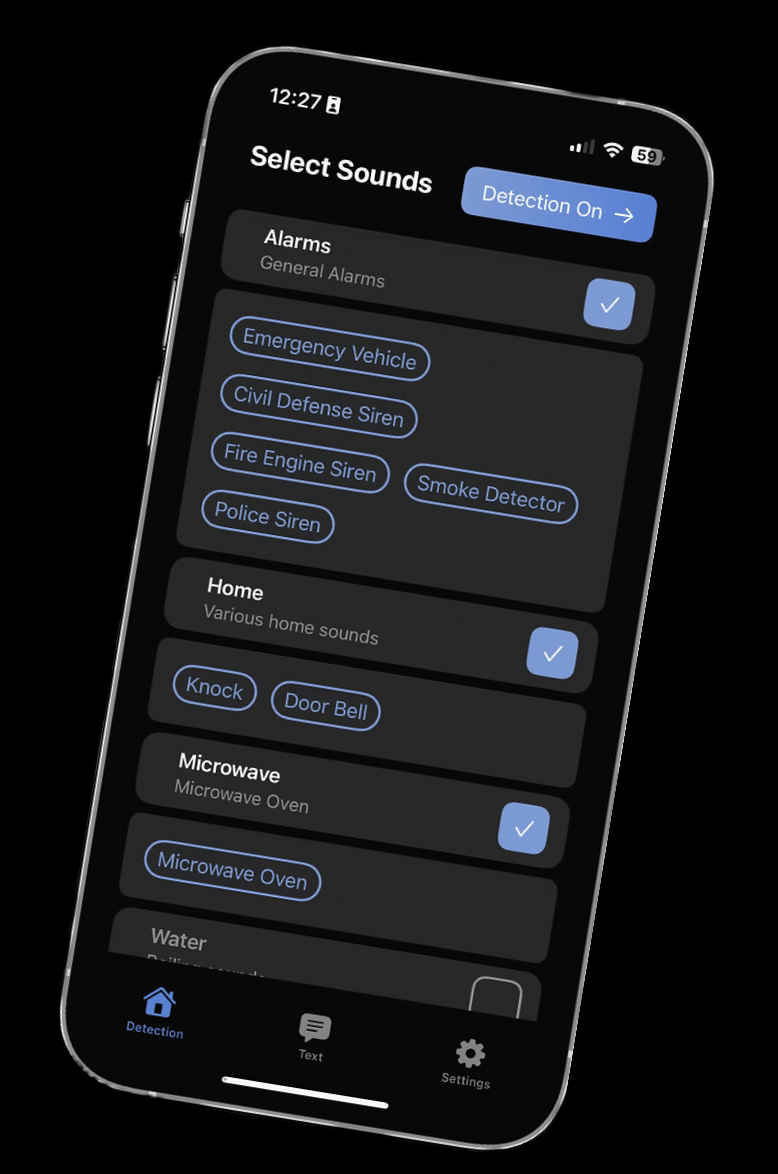
For a young child who is deaf or hard of hearing it is very important to make sure that the environment in which he/she spends time is friendly, accessible, safe and predictable. Fostering a supportive and accessible environment will help even young children become aware of the safe and secure place in which they live. Once your child begins to understand his/her environment, your child begins to understand how to interact with it.
The following items will help your child better understand the world around him/her.
Vibrating watches can include fitbits, an apple or garmin watch and more. These are great to use as an alarm clock as well as alerting for messages and phone calls. Many of these watches can be paired with an alarm clock or a phone that can send a signal to the watch. A watch that is paired to a phone that can also receive notifications can be used with the new Taptic d/Deaf App. See our blog about Taptic
PICTURE THIS SCENARIO: A young hard of hearing toddler is playing on the floor with his mother. They are playing with his cars and running them up and down a ramp and the child is very engaged. The doorbell rings and his mother gets up and goes into the other room to answer the door. The child looks up to find the mother gone. He is scared because he has no idea of where she went or why she left so suddenly. The young child with hearing loss does not have access to all of the clues in the environment around him that signal why his mother went to answer the door. He did not hear the doorbell or knock, the sound of his mother getting up off the floor, or her footsteps, the door unlocking, or if his mother was talking to the neighbor.
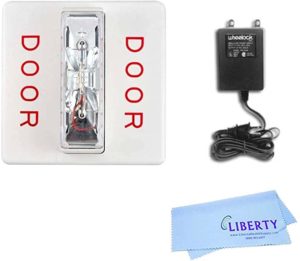 A doorbell flasher can be a great way to help even a very young deaf or hard of hearing child gain the assurance that comes with knowing what will happen next. The child may connect the flashing light with the mother going to answer the door or to the exciting anticipation of a new visitor.
A doorbell flasher can be a great way to help even a very young deaf or hard of hearing child gain the assurance that comes with knowing what will happen next. The child may connect the flashing light with the mother going to answer the door or to the exciting anticipation of a new visitor.
Similar to the visual signal for the doorbell, the visual alert system for the telephone will help a child come to associate the visual stimulus with an action or response from the family. Families can also use the visual cues to call attention to sounds that the child may be able to hear with or without the use of other technology. This will help the child develop some awareness of the auditory signals as well.
A child who is deaf or hard of hearing tends to be more visually aware of their surroundings and tends to depend much on visual information even if they have access to sound through the use of hearing aids or a cochlear implant. Therefore, it is important to be aware of the lighting in your baby’s environment. A few examples of things to consider:
Visual signals that accompany smoke and fire alarms are very important. Sometimes, even with hearing aids, a child cannot hear these important sounds. In addition, it may be important to alert the child to certain events when they are not typically wearing their hearing aids, such as while bathing or asleep.
You may purchase a smoke alarm that has a strobe light that flashes throughout your home and all hotels will have them for your room upon request. An older child needs awareness of these events as they start to stay home alone and increase their independence. Devices are available to provide either visual or vibratory signals to the child who is deaf or hard of hearing.
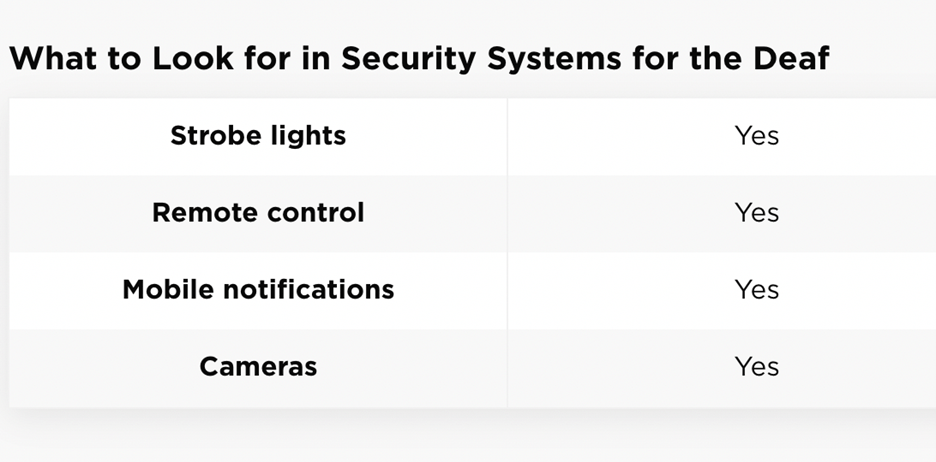
Telephone Flasher – A visual alerting system that signals when the phone is ringing.
Telephone Ringers and Amplifiers – Telephone amplifier devices may work with a hearing aid or independently from it. Amplifiers may increase the volume of the phone.
Wake-up Alarm – A clock that flashes a light, vibrates or has a loud buzzer tone.
Captioning – Most broadcast content on television has captioning (also known as subtitles). If you view it online, it should have captioning as well but compliance for this varies with the provider. Captioning is also available in most movie theaters and can be available in some live theater venues. It is best to check the availability of this accommodation with the venue before arriving.
Vibrating watches can include Fitbits, an Apple or Garmin watch and more. These are great to use as an alarm clock as well as alerting for messages and phone calls. Many of these watches can be paired with an alarm clock or a phone that can send a signal to the watch. A watch that is paired to a phone that can also receive notifications can be used with the new Taptic d/Deaf App. See our blog about Taptic App.
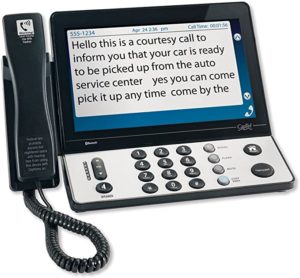 Specialized telephones include accessibility features. Among many these are volume levels well beyond those found in standard telephones (but will reset to safe loudness level after you hang up), adjustable tone control for maximum clarity, extra loud adjustable ringers, larger dialing pads and speaker phone options. Amplified cordless telephones offer many features of corded phones with the additional benefit of portability.
Specialized telephones include accessibility features. Among many these are volume levels well beyond those found in standard telephones (but will reset to safe loudness level after you hang up), adjustable tone control for maximum clarity, extra loud adjustable ringers, larger dialing pads and speaker phone options. Amplified cordless telephones offer many features of corded phones with the additional benefit of portability.
Not every situation requires replacement of existing equipment. Other add-on products such as amplified ringers, portable amplifiers and visual ring flashers can add important features to existing telephones.
Most landline phones (corded and cordless) have handsets that generate telecoil EMF signals that can be accessed via a telecoil (a/k/a T-coil) program in hearing aids or implants. Telecoil programs do not come as a default program on most devices so be sure to consult with your audiologist. An increasing number of cell phones have a Hearing Aid (and cochlear implant) Compatible (HAC) rating. The M (microphone) rating is a measure of how loud the microphone (speaker) is as it’s held to the ear and is rated 1-4. The T (telecoil) rating is a measure of how loud/strong the telecoil is. When picking a phone, you do not want to go below M3 and/or T3. Such compatibility is an important factor in purchasing a cellphone. With private landline phones, an older child may benefit from connecting a standard “over the ear” headphone to the telephone. Headphones generate good telecoil signals. These devices are widely available as complete microphone/headsets normally used in office settings. They are also available for portable phones and cellular phones. Your audiologist can guide you in choosing the most appropriate phone accessibility features.
Today’s cell phones have “chat” and “text services” available for messaging, a very popular mode of communication. Using these services is a good way to reach a child who is deaf and/or hard of hearing without the child having to worry about understanding what is spoken. Apps available on cell phones such as Innocaption and Captionmate will caption phone calls whether received or sent and even allow joining a conference call. Programs such as Google Meet and FaceTime allow for making group calls without video but with captioning. Finally, if your child is in a small group setting, they may utilize app services to caption and record the meeting such as Ava and Otter.
The ability to watch and enjoy television can be more difficult for a child with hearing loss. If a child needs greater amplification, simple solutions include Bluetooth streaming directly into your child’s device or a TCoil. The television volume can be set at a level comfortable for others in the room while the person with hearing loss can adjust the audio receiver as needed.
Closed captioning is another very valuable tool. Captioning enables the user to read text on the television for everything that is being spoken in the program. All televisions made after 1993 that are 13” or larger are required to automatically have the closed captioning technology built-in to the television. FM/DM systems can also be adapted to broadcast the television signal.
Music is accessible to many DHH children via Bluetooth streaming from a smartphone or tablet. However, if that is not an option, children who enjoy listening to music or recorded speech should use hearing aids and cochlear implants with telecoil capability. A child can connect to personal media players, mobile phones and tablets using ordinary over the ear headphones. Any standard headphone with a large, cupped pad (not the in-the-ear type) will normally work.
Alerting Systems provide alternate notification by using extra loud ringers, flashing a lamp or activating a vibrating device to notify a person of sounds in the home. Examples of this include a doorbell or telephone ringing, a baby crying, the smoke alarm sounding, or any other important sound in the home. Systems can be basic with just a few points of notification, or they can be more advanced and provide complete notification in the home.
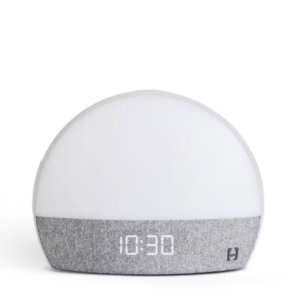 Alarm clocks are always an important thing to consider for your child, especially when they are school-age. Alarm clocks can wake up your child by any of the following options: an alarm with a lighting system, flashing light, vibration (with a bed shaker), audio alarm with adjustable tone and volume, or any combination of these. Some alarm clocks can work as a receiver for an alerting system. Alarm clocks are also available in smaller, more portable designs that are convenient for traveling.
Alarm clocks are always an important thing to consider for your child, especially when they are school-age. Alarm clocks can wake up your child by any of the following options: an alarm with a lighting system, flashing light, vibration (with a bed shaker), audio alarm with adjustable tone and volume, or any combination of these. Some alarm clocks can work as a receiver for an alerting system. Alarm clocks are also available in smaller, more portable designs that are convenient for traveling.
A good blog to reference: https://www.hearsoundly.com/guides/vibrating-alarm-clocks-deaf-hard-of-hearing.
Unsure which of these might benefit your child? Speak with your audiologist, early intervention provider, deaf mentor, or other parents. They can help you!
Vibrating watches can include Fitbits, an Apple or Garmin watch and more. These are great to use as an alarm clock as well as alerting for messages and phone calls. Many of these watches can be paired with an alarm clock or a phone that can send a signal to the watch. A watch that is paired to a phone that can also receive notifications can be used with the new Taptic d/Deaf App. See our blog about Taptic App.
Phone technology has come a long way in the past few years and visual communication has grown in ease of use and accessibility due to the pandemic. Most of today’s phones, both Smartphones and Androids, have FaceTime features to video chat and Bluetooth capabilities to stream the conversation directly into your child’s device. In addition, texting has become the norm for all phone users which has increased communication accessibility by leaps and bounds for hearing aid and cochlear implant users.
Google Meet, Facetime, Zoom and other video chat options are now popular and common modes of communication for individuals. Most computers come equipped with Webcams, or an external Webcam can be purchased for the computer. When both users are sitting in front of the cameras, they can be connected through the Internet and are able to view one another while they talk. This mode of communication has been very popular for those individuals who use ASL to communicate or Total Communication, as it allows persons who are deaf to contact one another via the Internet and communicate with sign language. This way, both users can view one another while communicating with sign language or reading lips.
All major platforms for video calls now support Closed Captioning with the click of one button making a transcript of the conversation easily accessible to the user. Most computers have Bluetooth capabilities that can be used during a video call allowing the conversation to stream directly into your child’s hearing device. In addition, these video calls can be recorded in case information was missed so the participant can go back to review the conversation.
Open captioning is a new technology growing in popularity at movie theaters to make movie going more accessible, less intrusive and more enjoyable for deaf and hard of hearing children. Open captioning is similar to subtitles where the words appear on the screen and cannot be turned off. Theaters are having special show times that include open captioning. If open captioning is not available, DHH movie goers can request Closed Captioning, in which the language is displayed on an electronic device the theater provides. Finally, Bluetooth technology with direct streaming capabilities is in the close future for movie theater shows.
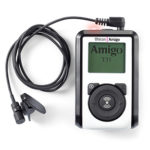
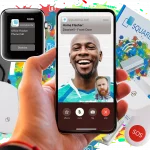

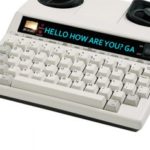
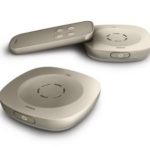
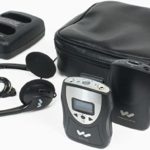
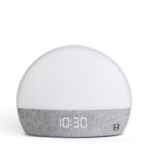
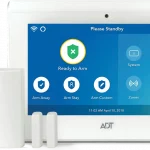
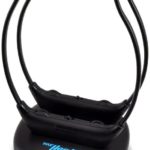
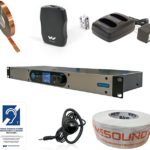
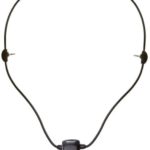

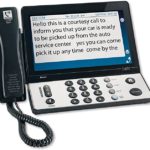
With any technology devices, FHSR recommends you work directly with your child’s Audiologist to make the correct selection for their needs and device. Our list is to provide you with the information of what is currently available to support your child.
Another key area is Hearing Assistive Technology (HAT). HAT is designed to help children hear better in a variety of difficult listening situations. Listening in classrooms, groups, restaurants, theaters, or in one-on-one conversations is not only influenced by noise but also by the distance between the speaker and the listener. HAT can bring the sound directly to the user’s ears without increasing background noise and can be used with or without hearing aids. Hearing Assistive Technology can include Bluetooth streaming, FM/DM systems, Infrared, Loop, and personal systems:
Another good link we found for additional information is:
https://www.asha.org/public/hearing/hearing-assistive-technology-for-children/
FM/DM Assistive Listening Systems use frequency bands - 216-217 MHz for FM and 2.4 GHz for DM to carry sound from the transmitter to the receiver. The sound source can be either a microphone or audio input. FM/DM systems are very versatile since they are portable. Both the user and speaker have complete mobility. These are ideal for classrooms, meetings, television, music players and cell phone interfacing.
Infrared Assistive Listening Systems use invisible infrared light waves to carry sound from the transmitter to the receiver. Infrared systems are considered to be line-of-sight devices often used in theaters, courtrooms, and meetings. The infrared system uses a single transmitter and one or more receivers, which must be on the same channel (95 KHz, 250 KHz and 2.3 MHz). The receiver converts the infrared light waves back into sound, which then can be amplified.
Loop Assistive Listening Systems use a physical wire antenna “loop” that surrounds a room or small area. A transmitter circulates a signal through the loop wire creating a magnetic field. Hearing aid users and cochlear implant users with a telecoil switched to “t-coil” will pick up the signal when they are within the “looped” area.
Personal Assistive Listening Devices pick up a sound through a microphone, amplify the sound and direct the sound to the ears through earbuds, headphones, or a neckloop for listeners with “t-coils” in their hearing aids or cochlear processor.
Streamers are intermediary devices that are either worn around the neck or clipped to clothing that receives an external signal (via Bluetooth, FM/DM or DAI) and then sends a proprietary signal with this information to a child’s hearing aid(s) and/or cochlear implant(s). Streamers are specific to manufacturers so you can’t use a Streamer A if you have Device B – it would have to be Device A.
Bluetooth streaming connects directly into your child’s assistive hearing device through smartphones, computers and tablets.
If you don't have access to internet services or smartphones...
There are many available technologies for children who have difficulty with discrimination of speech on the telephone. This difficulty is compounded by the poor voice quality of many users of cell phones and speakerphones. A technology that provides assistance by converting speech to sign/text is the nationwide relay system. It is a 24/7 free service in all states for domestic calls. Long distance calls are charged normally. The essential feature of the relay system is that the child with a hearing loss views a screen on which spoken text is signed/typed. The calls are treated as confidential by the communication assistant (CA).
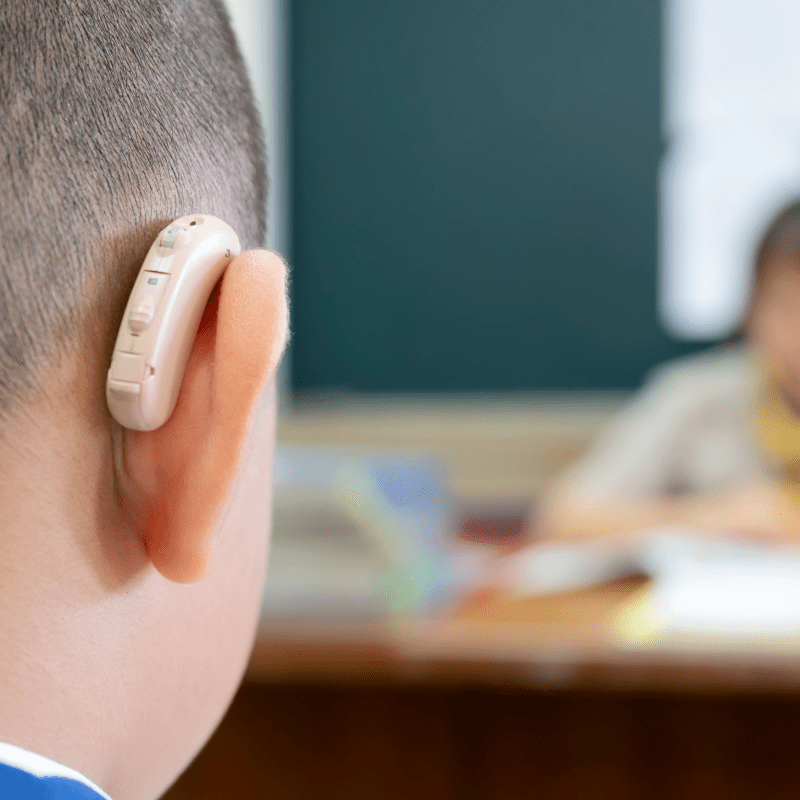
It is important to recognize that it is ok to make changes along the way! Your child’s communication needs may change over time, therefore the communication approaches used by you, your child, and your family may change as well.
Listening in our communities can be a challenge for everyone but is especially difficult for those with hearing loss. Listening in noise or at a distance can also be very tiring because certain sounds cannot be heard or may be distorted or unclear. For children with hearing loss, it is important that we provide them the clearest, most reliable signal possible because they are using this input to develop speech and language.
Fitting the most appropriate amplification such as hearing aids or a cochlear implant is the first step to success for a child with a hearing loss, but even the best amplification is not always enough. In noisy places and at times when the speaker is more than a few feet away, it will still be difficult for the child to understand what is being said. For these challenges such as listening in a classroom, playing outside, or at a party, a child may need the Roger system working along with their hearing aids or cochlear implant. If a Roger system is not available, then a FM system is an option. In general, most public school districts will purchase and provide either a Roger or an FM system to assist your child while they are at school through your child’s IEP plan. Families might also want to consider purchasing a system to use at home to support their child communication.
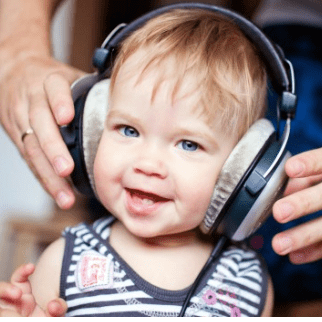
We hope you will consider making a gift to support these children. Thank you!
Sign up to be the first to know about new FHSR resources, programs, and events.
FHSR is a qualified 501(C)(3) tax exempt organization. Tax ID number 36-6082810.

FHSR’s MARCOM Gold Award-Winning Website was developed in collaboration with Carlson Integrated, LLC.
MarCom Awards is an international creative competition that recognizes outstanding achievement by marketing and communication professionals. MarCom Awards is administered and judged by the Association of Marketing and Communication Professionals. Judges are industry professionals who look for companies and individuals whose talents exceed a high standard of excellence and whose work serves as a benchmark for the industry. There were over 6,000 entries from 41 countries in the MarCom Awards 2021 competition.